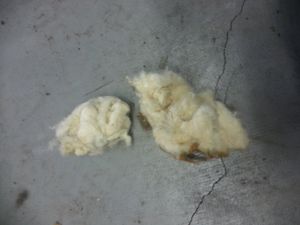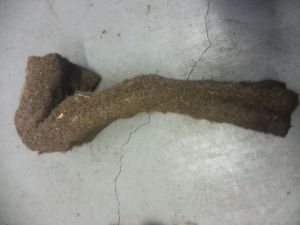- Home
- About Us
- Join/Renew
- Member Benefits
- Member Pages
- Log In
- Help
- Museum Store
While removing the overdrive handle/cable and the speedometer cable from the frame. I removed this cotton style insulation that was packed very tightly in the triangular area of the body frame. There appears to be nothing wrong with it not sure if its original.
I will also attach a photo a reddish style insulation that surrounded the interior of the firewall. I was wondering is there a suitable replacement(same style) or should I use a modern dyna mat, Lizard skin, etc. Thanks for any guidance
In another thread I thought someone had mentioned that very large pictures will not upload. You may have to reduce them to under 2Mb.
I have reduced the size again and they will not upload, sorry
Thanks I will Peter
Here are Roger’s pics.
He apparently has PC problems.

Here is the second.

Roger, I removed the same batt from my ’35, packed behind the upper firewall a few months ago, and just removed the front firewall and packed fiber type insulation sandwiched between the front and rear firewalls. I knew I had seen a reference to it somewhere in the literature and finally did in Arrow 95 Model 2 (1995)in the re-printed dealer data book for 1935.
“Costly all-fibre Seapac insulation from the Javanese Ceiba tree seals the dash from motor compartment. Waterproof and fire proof, this latest insulation is the result of airliner soundproofing and heat insulation developments”.
Must have been the stuff used for cutting the cabin noise down on DC-3’s!
Mine looks like yours, and it did indeed survive water without rotting, but unfortunately wicked water to the firewall and created lots of rust on the firewall and the free-wheeling control lever.
At any rate, there isn’t a lot of difference in heat transfer coefficients for packed insulation material, but the sound deadening role probably favors a relatively dense packing of fiber materials. Probably some sort of dense packed fiberglass product, or take fiberglas batts and compress them down. There are probably products out there but haven’t looked for a while. Maybe this post will bring some more responses.
I also have the looser low density cotton like material packed in the corners of both sides as you describe, so seems with two votes it likely is original. It does resemble a short fiber fiberglass, maybe rock wool? I will probably use fiberglass batting for that. Other brands besides Owens_Corning that aren’t pink!
A quick google search indicates the material -including the light cotton like material – is Kapoc. It is water resistant but highly flammable, so presumably Seapak (correct spelling) may have treated it with some sort of flame retardant for aircraft 9and P-A firewall) use.
James ,Thanks for the info. Pretty amazing this is original. After some time on the net I have found and contacted the Sutherland Felt Co in MI. The company makes some automotive related items, Buzz, Squeak & Rattle Felt. Thank you again for your research.
It has been more than a year since this topic was discussed but maybe worth resurrecting.
I finally reached the point of replacing the insulation on the firewall of my ’35 and found higher density fiberglass batting that seems like a fair substitute for the thick Kapoc batt that is stuffed up in that space above the firewall. I think I will also use it for the insulation between the two metal firewall panels to replace the Kapok. It is much denser than the usual low density fiberglass batts. I got it from McMaster-Carr and rolls and stuffs nicely:
Very-High-Temperature Sheeting
Temperature Range: 0° to 1000° F
Heat Flow Rate (K-Factor) @ 75° F: 0.26
Density: 2.4 lbs./cu. ft.
Color: Gray to brown
Whether it’s for industrial furnaces or other extreme-heat applications, lightweight fiberglass sheeting can handle the heat. Can be used outdoors with metal jacketing. Meets ASTM E84 25/50 for flame and smoke.
